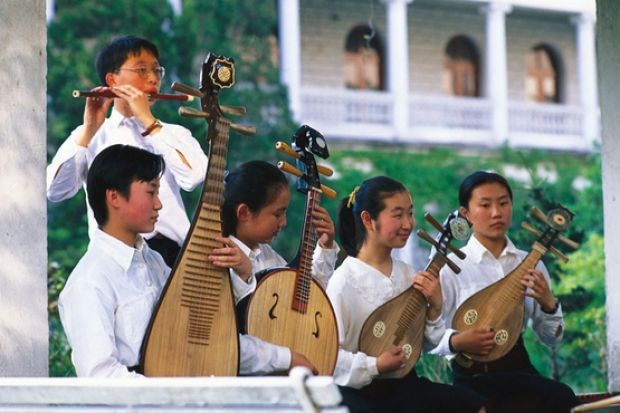“It is parents’ sorry lot to ensure the well-being of their children.” This is a household saying in China, typically put into practice by the tens of thousands who accompany their kids to art examinations (yi kao) in the icy winds of early spring.
Nowadays, huge numbers of parents seem to be encouraging their offspring to take art exams and to major in such subjects so that they might gain an advantage in China’s cut-throat national university entrance exams, the gao kao. The tactic makes sense, on the surface at least: the nation’s colleges set significantly lower admission scores for art subjects in all their forms (performing arts, painting, animation and so on).
Students in their third year of secondary school can choose to take art exams arranged by various colleges, which are usually held between February and March (much earlier than the gao kao, sat in June). Applicants are evaluated by tests in separate art and culture sections, the latter of which include Chinese language and other subjects common to the national exams.
There is no escaping their date with destiny: after sitting yi kao, students still have to take the national exams. However, there are potential advantages to following the art route: those who do exceptionally well in the art-specific section enjoy privileges and may be admitted even if their grades fail to meet the standards demanded by the China-wide entrance tests.
This could explain why one sees so many children these days practising their piano-playing or singing without enthusiasm. It is also why at this time of year local and national media outlets churn out bucketloads of statistics and news analysis of art exams, complemented by human interest stories and appealing pictures of students and parents.
According to China Daily, for the two most prestigious Chinese colleges that offer the most popular acting courses in the country, competition this year has been incredibly tough. Only 50 out of 9,000 who took the exam for the Central Academy of Drama won a place; at the Beijing Film Academy, the figure was 75 out of 4,569.
Not all those who take art exams have much artistic talent or passion for the subjects. The country’s largest education portal, China Education Online, goes further, claiming that of the 1 million students who sat the exams this year, “at most 10 per cent really love the arts”.
Despite the odds (and their children’s lack of enthusiasm or aptitude for the subjects), it is some parents’ “sorry lot” to take real risks, despite the diminishing returns. According to the Shanghai-based Oriental Morning Post, in recent art exams arranged by Shanghai University, 16 students were suspected of using false identity cards - and all of them beat a hasty retreat after they were asked to have their ID scanned. The students risk being suspended for one to three years from taking art exams and other national exams.
One might wonder why, with such low odds, the art route remains attractive to students and their parents. The explanation is probably that it was once seen as an easy “road less travelled” into college, a perception that persists, even though so many have taken it that it is now potholed and treacherous.
